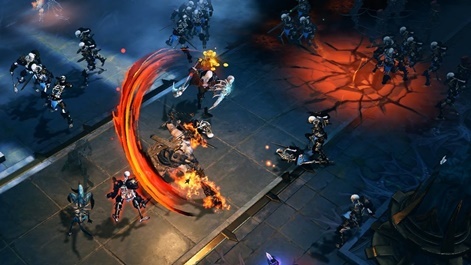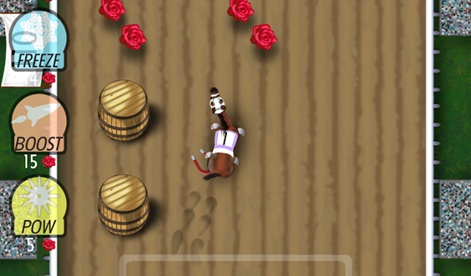Earlier this year we posed the question to our Indie Mavens whether or not they should get in on the battle royale trend, with Epic Games’ Fortnite and Tencent’s PUBG Mobile locked in a lucrative face-off.
One thing to come from our conversation was the idea that maybe it’s not if indies could get on the battle royale trend, but should they?
“I feel it goes against why developers go independent in the first place,” said Perchang co-founder Ben Murch.
“We do this to try our own ideas, invent genres, to boldly go - well; you get the idea. We don't do this to copy what's gone before.”
His words sum up the indie spirit, but how indomitable can that spirit be in the face of the hard realities of the mobile market?
To delve into that thought a little more, we asked our Indie Mavens how much innovation consumers are really looking for and where indies fit in today's mobile market.
Specifically, we asked:
Does the market want innovation or more of the same?
Where do indies fit in on mobile right now?
Does the market want innovation or more of the same?
The games market is a funny beast these days. It's vast and generally quite quiet.
Moving around like a massive herd of robot cows, gently humming away as they feed upon the latest triple-A release. This peace is occasionally broken by tiny pockets of extremely loud customers who shout for change, cheaper games, better games or Diablo 4.
And because they're so loud, it's easy to think that's what the overall market wants. The robotic bovines (robovines?) raise their heads at the buzz but then go back to their munching.
The quantity of titles being released has grown hugely over the last few years, so it's very easy to get lost.Ben Murch
Generally speaking, the herd is pretty content playing slightly upgraded versions of their favourite titles. Innovation is welcome for the fringes, but it has to be well measured, tested and integrated slowly to the rest.
Because you really don't want to spook that herd. They might stampede!
Where do indies fit in on mobile right now?
The mobile market is like a shoal of robotic fish. Only joking. It can feel like life is slightly tough for indies right now.
The quantity of titles being released has grown hugely over the last few years, so it's very easy to get lost. Couple that with the rise of the free-to-play publisher monopoly and it can be hard for a little Indie to stand out.
Luckily, Apple seems to have recognised this too and are actually pretty great at helping us get exposure. They even have a dedicated section on their store!
Also, the sheer size of the audience plays in our favour, because snagging 0.01 per cent of the estimated 2.1 billion mobile gamers will still see you well on the way to that sequel. And perhaps that indie niche is wide enough to try some innovation.
Does the market want innovation or more of the same?
I agree with Ben on this one. The big money game regarding what gets coverage, marketing budget and sales usually have a number after it (which can sometimes be lower if it’s another game by the same publisher but with horses instead of cars).
The thing is, I’m actually kind of in favour of this when it’s a game I like. But I can understand players’ fury when the new iteration isn’t what they thought they wanted, even if I don’t agree with how their furious assumption that just because the different version of the game isn’t what they want, it shouldn’t have been made.
The bit I’d like to see a change in isn’t the actual release of the same games with new stuff, but the balance of coverage between these monster iterations and the innovative new stuff.

The more the interesting new stuff gets covered and not swamped by yet another story about the same game that’s been covered for the last 10 years, the more players will actually get to try them.
I’m always a bit split on this as I’m forever having to go back to our 10-year-old game that scrapes some income because players want to keep playing it. Which is a good thing.
I do, however, like trying new stuff. Sometimes it works (we won an Apple Design Award for innovation back in 2004), sometimes it just vanishes without a trace (usually).
Adam and I are actually writing a whacky new innovative game at the moment. It’ll probably get five downloads.
Where do indies fit in on mobile right now?
Wherever we can get a handhold and just hang on I think.
As Ben said, Apple is helpful, and they do like to pick up on innovative games, so it’s sometimes worth the gamble.
Does the market want innovation or more of the same?
Always the same. Innovation in video games has been a lure for a long time now, but most players absolutely don't care about innovation. They just want to have fun, however it comes.
Where do indies fit in on mobile right now?
Indies have been dead on mobile for a few years and innovation in this market is even harder on mobile.
Even if Apple tries to sometimes highlight a few indie games, it hasn't really helped at all.
Does the market want innovation or more of the same?
I think innovation works best in small doses — a tiny tweak here, a small move there.
Everything else has to be perfectly designed. Then you might have a winner.
With our latest Steam release (also planned for mobile later on) Pig Eat Ball, it was probably too much.
It's a polished action-adventure, but so strange, people don't know what to make of it on first glance.

And "first glance" is the key on mobile unless you have lots of marketing money. Google's 70/20/10 development rule suggests only 10 per cent on innovation.
So when a game turns almost everything on its head to shake things up, gamers won't know what end is up and skip it.
Where do indies fit in on mobile right now?
Our next unannounced mobile game is designed as casual and free-to-play.
Thus, we will be seeking a publisher. I've done free-to-play on my own (Finger Derpy, 2015) and while it had some downloads, it wasn't enough and didn't make much money. Get as much help as you can.
Does the market want innovation or more of the same?
When you are making games, regardless of platform, you are making games for people with their own tastes and needs from their entertainment.
I think indie game development is the most likely space to push the boundaries of what is possible on mobile.Molly Heady-Carroll
This is why we have both successful games that follow trends and successful games that walk their own creative path. I firmly believe that the variety of players in the world means there is room for both.
Where do indies fit in on mobile right now?
Mobile is suffering from somewhat of an image problem (as illustrated by the recent Diablo Immortal controversy), so it is easy for players to not see mobile as a space for creative indie projects.
Despite this, some of my favourite developments in gaming right now are in mobile. Not only is there a whole new audience of players thanks to the accessibility of the mobile platform, but developers also have room to experiment with the relatively new and unexplored platform.
I think indie game development is the most likely space to push the boundaries of what is possible on mobile.
Does the market want innovation or more of the same?
I’m not sure if this is the same thing but the market wants F2P and sadly that does have a big impact on innovation.
More and more at Nitrome we find ourselves throwing away ideas because they just don’t fit well with currently successful business models.
The business model does tend to suit certain sorts of games so as a result innovation is hindered.
I don’t think that means the market doesn’t want innovation. It’s probably always a good thing to make something that stands out, but finding something that does so without negatively impacting the models that convert can be challenging.
Where do indies fit in on mobile right now?
I think the days of making very small games based around an original idea and turning a profit purely of getting featured are behind us.
To be successful now, I think a stronger monetisation model is needed and that means making a bit bigger games with more depth. That means more risk which probably makes the idea of using a publisher more appealing than it was a couple of years back.
Chiming back in on this one as the current project was still under wraps when I first replied. I’m kind of hoping the market still wants a bit of innovation as we’re about to release the first ever nose and tongue controlled game!
Face Candy is about picking up candy with your nose and sticking your tongue out to slurp it down. It’s very silly.
If all goes well, it’ll be on the App Store within a couple of weeks of the article going live, so we’ll know by the next one whether the market wants it or not.
The market says it wants innovation, but it also tends to reward games that feel familiar and stick to genres and tropes. Often innovating means sacrificing something to go out into the unknown.
Usually, it's expensive and you won't have the best iteration of that new mechanic/idea because it's new to you, the developer, as well.
You can find more indie games insights live at Pocket Gamer Connects London 2019 on January 21st to 22nd. We'll be hosting a special 'Indie Track' dedicated to all things - you guessed it - indie at the show.




























